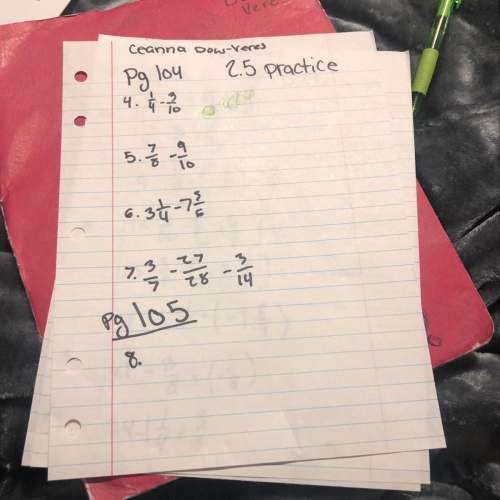
Mathematics, 23.11.2019 05:31 elliswilliams6035
In a rural area, only about 30% of the wells that are drilled find adequate water at a depth of 100 feet or less. a local man claims to be able to find water by "dowsing"—using a forked stick to indicate where the well should be drilled. you check with 80 of his customers and find that 27 have wells less than 100 feet deep. what do you conclude about his claim?
a) write appropriate hypotheses.
b) check the necessary assumptions.
c) perform the mechanics of the test. what is the p-value?
d) explain carefully what the p-value means in context. e) what’s your conclusion?

Answers: 3


Another question on Mathematics

Mathematics, 21.06.2019 17:00
Arley is building a model of a city map. in one part of the city, three roads form a right triangle, which harley draws as triangle abc, with the following measures: m∠b=90° and m∠a=30°. in his scale model, the hypotenuse of triangle abc, ac¯¯¯¯¯¯¯¯, has a length of 817−−√ cm. what is the value of a (the length of bc¯¯¯¯¯¯¯¯)?
Answers: 1

Mathematics, 21.06.2019 23:30
Write a similarity statement for the similar triangles. afgh ~ a
Answers: 1

Mathematics, 22.06.2019 02:30
Aresearch study is studying the effects of a new drug for osteoporosis alzheimer's disease (ad) for women above the age of 65 years. a group of individuals with osteoporosis is randomized into two groups. one group is treated conventionally, and the second group is treated with the new medication. assessments are made at 3, 6, 12, 36, and 48 months. the conventionally treated group is assessed for ad using a serum blood test, and the treatment group is assessed for ad using a pet radiotracer that binds to beta-amyloid plaques. in comparing these 2 trial arms, the authors of the study may encounter which type of bias? a. selection bias on the risk of developing b. measurement bias c. confounding bias d. recall bias e. lead-time bias
Answers: 2

Mathematics, 22.06.2019 04:30
Consider the linear model for a two-stage nested design with b nested in a as given below. yijk=\small \mu + \small \taui + \small \betaj(i) + \small \varepsilon(ij)k , for i=1,; j= ; k=1, assumption: \small \varepsilon(ij)k ~ iid n (0, \small \sigma2) ; \small \taui ~ iid n(0, \small \sigmat2 ); \tiny \sum_{j=1}^{b} \small \betaj(i) =0; \small \varepsilon(ij)k and \small \taui are independent. using only the given information, derive the least square estimator of \small \betaj(i) using the appropriate constraints (sum to zero constraints) and derive e(msb(a) ).
Answers: 2
You know the right answer?
In a rural area, only about 30% of the wells that are drilled find adequate water at a depth of 100...
Questions






History, 03.03.2020 20:46

Mathematics, 03.03.2020 20:46

History, 03.03.2020 20:46

Mathematics, 03.03.2020 20:46

Physics, 03.03.2020 20:47







Mathematics, 03.03.2020 20:47

Biology, 03.03.2020 20:47

SAT, 03.03.2020 20:47









